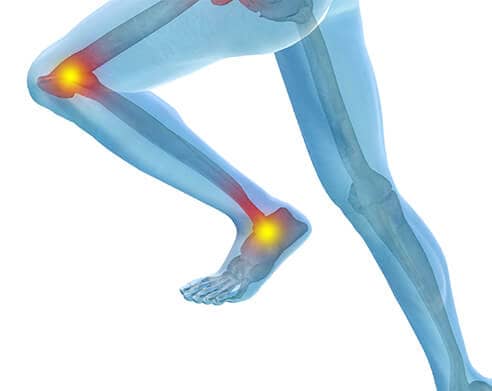All ACL reconstruction surgery is done arthroscopically and on an outpatient basis.

Patient Health Optimization – Pre ACL Reconstruction Surgery
Regain range of motion prior to ACL reconstruction, either on your own or under the care of a physical therapist. Ride a bike, lift weights or take brisk walks to maintain leg strength, and keep up core exercises while awaiting surgery. Stop smoking, the chemicals in the smoke impair healing. The website ACL Surgery provides unbiased advise and information from real patients.
Any surgical procedure has possible risks and complications. Surgeons make every effort to minimize them. They include:
ACL RECONSTRUCTION OVERVIEW (ANTERIOR CRUCIATE LIGAMENT)
The ACL is the main stabilizer of the knee. The ACL is frequently torn and requires reconstruction due to the importance of this ligament. Treatment decisions for ACL tears are always individualized. The decision to perform surgery is based on the person’s age, activity level, how unstable the knee is, and whether other structures in the knee have been injured. Usually surgical ACL reconstruction is recommended to restore stability to allow people to return to desired activities and to prevent secondary damage to the menisci (cartilage cushions) and articular cartilage of the knee, hopefully avoiding premature deterioration of the knee.
All ACL reconstruction surgery is done arthroscopically and on an outpatient basis. The standard is anatomical ACL reconstruction for more favorable graft placement and improved outcomes. I am practicing what Dr. Freddie Fu would term the “anatomic principle,” by reproducing the natural anatomy using newer techniques for creating the femoral and tibial graft insertion sites. As an ACL Doctor, I favor reconstruction using an autograft-tissue graft harvested from the patient (rather using allograft-cadaveric tissue). I believe that obtaining the graft from the patient results in a better reconstruction with superior long term results and lower ACL re-injury rates.

COMMONLY USE SEVERAL GRAFT OPTIONS CUSTOMIZED TO EACH SPECIFIC PATIENT
Hamstring Autograft (semitendinosus and gracilis combined) with Endobutton CL fixation on the femur and the PEEK interference screw on the tibia is the common option. In high demand athletes, typically younger than 30, a Patellar Tendon Autograft with PEEK interference screw fixation is a good treatment choice. I have recently used a Quadriceps Tendon graft with good results in revision surgery in which the hamstring autograft had already been used. Two scientific studies in the last several years show a high (10 – 25 %) failure rate if allograft tissue AND aggressive rehabilitation programs are combined in patients less than 30 years of age. Generally, graft tear rate is 9 % in the initial 2 years after surgery. Return to unlimited sports activities typically occurs 1-2 years after surgical reconstruction. Return earlier than 6 months risks serious re-injury..
Anatomy of the ACL and Mechanism of Injury:
The function of the ACL is to provide stability to the knee and minimize stress across the knee joint:
A tear to the anterior cruciate ligament (ACL) results from overstretching of this ligament within the knee:
Often, but not always, depending on a person’s activity level, a torn ACL needs to be fixed. Unfortunately a simple repair by suturing the torn ligament together again is not effective. A successful repair involves completely replacing the torn ligaments, and there are a number ways that this can be done.
WATCH RELATED VIDEOS
Makoplasty Robotic Assisted Knee Surgery Videos
Ready to Schedule a Consultation?
Get started today by completing our request form. If you have additional questions, contact us by phone or e-mail, and our trained staff will assist you to the best of our ability or have Dr. Tarlow address your question when appropriate.
